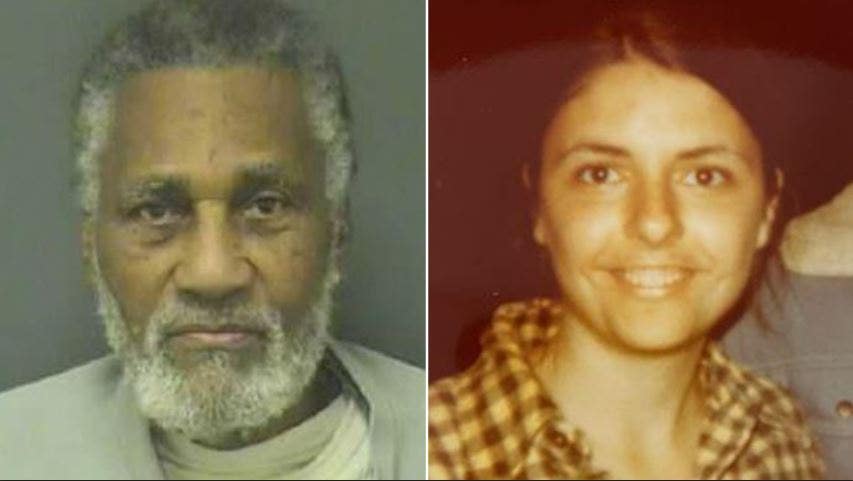A 78-year-old man incarcerated nearly 2,000 miles away has been charged with the 1980 sexual assault and murder of a 25-year-old Texas nursing student, Austin police said. Thanks to DNA technology, police were able to link Deck Brewer Jr. — currently serving time in Massachusetts for an unrelated crime — to the murder of Susan Leigh Wolfe. Wolfe was allegedly kidnapped and killed by Brewer a block from her home on Jan. 9, 1980, while walking to a friend’s house. She had just enrolled at the University of Texas Austin School of Nursing that day and was just four days from her 26th birthday when she was murdered. A witness saw a car stop, the suspect grabbed Wolfe off the sidewalk, and forced her inside after throwing a coat over her head.
After Wolfe’s body was found in an alley the next morning with evidence of strangulation and sexual assault, investigators with the Austin Police Department followed up on dozens of leads in the first year of the case. They interviewed at least six suspects and at one point had as many as 40 persons of interest. Last April, detectives submitted crime scene DNA evidence to the Texas DPS Crime Laboratory, and in February the results eliminated the six known suspects. The evidence was entered into the Combined DNA Index System (CODIS), and in March, Brewer was identified as a possible match. After a DNA search warrant, Brewer was confirmed as a match. He admitted to investigators that he had been in Austin around the time of the murder but did not provide further details without a lawyer.
The chance of Brewer’s DNA being incorrectly matched was calculated at one in 550.5 quintillion, according to police. The case remains active, and investigators are seeking to identify the person the witness saw in the passenger seat when Wolfe was abducted. Authorities are interested in further questioning this individual, as they believe they may have also been involved in the crime. The use of DNA technology and the national DNA database of convicted offenders, unsolved crime scene evidence, and missing persons has been instrumental in solving cold cases like these. Brewer’s arrest highlights the progress made in forensic technology over the years and brings new hope to victims’ families seeking closure.
The arrest of Deck Brewer Jr. has reignited the nearly 40-year-old cold case of Susan Leigh Wolfe’s murder, shedding new light on the events that transpired in 1980. Thanks to advancements in DNA technology, investigators were able to link Brewer to the crime despite his incarceration nearly 2,000 miles away in Massachusetts for a different offense. Wolfe, a promising nursing student at the University of Texas Austin School of Nursing, was kidnapped and murdered just days after enrolling in her program. The witness account of the abduction and the subsequent discovery of Wolfe’s body in an alley shed light on the horrific circumstances surrounding her death.
The dedication of investigators with the Austin Police Department and the utilization of new forensic methods have resulted in a breakthrough in the long-standing cold case. Following up on numerous leads and interviewing multiple suspects over the years, the authorities were finally able to make progress in Wolfe’s murder investigation through DNA analysis. The submission of crime scene DNA evidence to the Texas DPS Crime Laboratory and the subsequent match with Brewer in March highlight the importance of technological advancements in modern law enforcement. Despite Brewer’s admission to being in Austin at the time of the murder, further details are being sought to establish a clearer timeline of events leading up to Wolfe’s death.
The calculated likelihood of Brewer’s DNA being incorrectly matched at one in 550.5 quintillion underscores the accuracy and reliability of DNA technology in criminal investigations. The significance of DNA evidence in identifying and apprehending suspects in cold cases cannot be overstated, as demonstrated by the breakthrough in Wolfe’s murder investigation. The ongoing efforts by investigators to identify the individual reportedly seen in the passenger seat during Wolfe’s abduction reflect the commitment to bringing all parties involved in the crime to justice. The collaborative use of DNA databases, forensic analysis, and witness testimonies has enabled law enforcement agencies to revisit unsolved cases and seek closure for victims’ families.
The impact of Deck Brewer Jr.’s arrest on the Wolfe murder case extends beyond the individual suspect to highlight the importance of collaboration between law enforcement agencies, advancements in forensic technology, and the pursuit of justice for victims of violent crimes. The revival of the decades-old cold case serves as a testament to the persistence and dedication of investigators in seeking resolution for unresolved cases. As the case remains active, efforts to identify the second suspect reportedly involved in Wolfe’s abduction continue, with the hope of bringing all responsible parties to account for their actions. The use of DNA technology in forensic investigations has proven to be a vital tool in solving cold cases and bringing closure to families impacted by tragic events like Wolfe’s murder.


